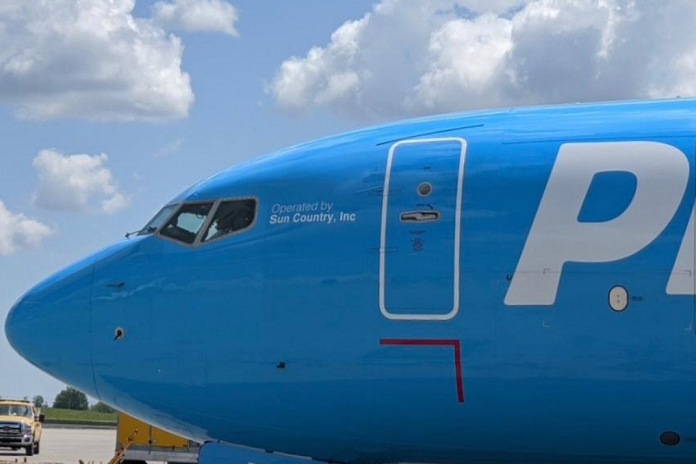KEY POINTS –
- * Between May and July, Amazon added nine planes to its air fleet, “the most it has added over a three-month span since its inception,” according to a recent study.
- * Amazon’s air fleet plays a critical role in the company’s ability to ensure one- and two-day delivery.
- * The company has grown its air cargo fleet to about 70 planes, up from a total of 50 last February.
The airline industry may be reeling from the coronavirus pandemic, but Amazon’s air cargo business has rapidly accelerated in recent months.
Between May and July, Amazon added nine planes to its Amazon Air fleet, “the most it has added over a three-month span since its inception,” said the report issued by DePaul University’s Chaddick Institute for Metropolitan Development. “Amazon Air expanded rapidly during summer 2020, a period otherwise marked by sharp year-over-year declines in air-cargo traffic,” the report states.
Amazon Air now includes about 70 planes and the fleet is expected to grow to more than 80 by 2021, Amazon said in June. That’s up from the 50 planes it counted in February 2019.
Amazon’s air fleet, launched in 2016, is a critical part of its push to provide one- and two-day delivery. The company still relies on outside carriers for a significant share of its deliveries, but it has gradually moved more of its logistics operations in-house, allowing it to better control costs and delivery speeds. Analysts believe Amazon’s air fleet, combined with its massive network of airplanes, truck trailers and vans, could one day position it to rival UPS and FedEx.
The coronavirus pandemic has generated even more pressure on Amazon to ensure fast delivery, as it saw a surge in online orders from stuck-at-home shoppers who turned to the company for essential goods and groceries, along with other products like office supplies and electronics.
While its fleet has grown since May, Amazon Air still remains smaller than its rivals, including FedEx, which operates 463 planes, UPS’ fleet of 275 planes and DHL’s 77 planes, DePaul researchers said in a separate report published in May.
Amazon’s $1.5 billion air hub in northern Kentucky could help give it an edge, the report said. The hub, scheduled to open in 2021, is designed to have capacity for 100 Amazon-branded planes and handle an estimated 200 flights per day.
“The massive investment being made in a large hub at Cincinnati/Northern Kentucky International Airport, however, could change everything,” the report said. “This hub appears to be the lynchpin to Amazon’s efforts to develop a comprehensive array of domestic delivery services across the United States.”
“Amazon is not trying to build a coordinated network of connecting flights akin to that of FedEx and UPS and acclimated toward overnight sorting and shipping. “Instead, it is creating a network designed to link warehouses and distribution centers to help position goods for rapid shipment to customers once an order is placed.” The report also found that the company is operating international flights, although a minimal number.
It said that the airline often operates semi-regular flights between the US mainland and both Amsterdam Schiphol and Shanghai Pudong International (Shanghai) airports — facilities widely regarded as focal points for logistics in continental European and China, respectively. Serving these points is most critical to just-in-time restocking. “We expect more flying to and from international points over the next several years. How quickly this occurs, however, is hard to predict,” the report states.





